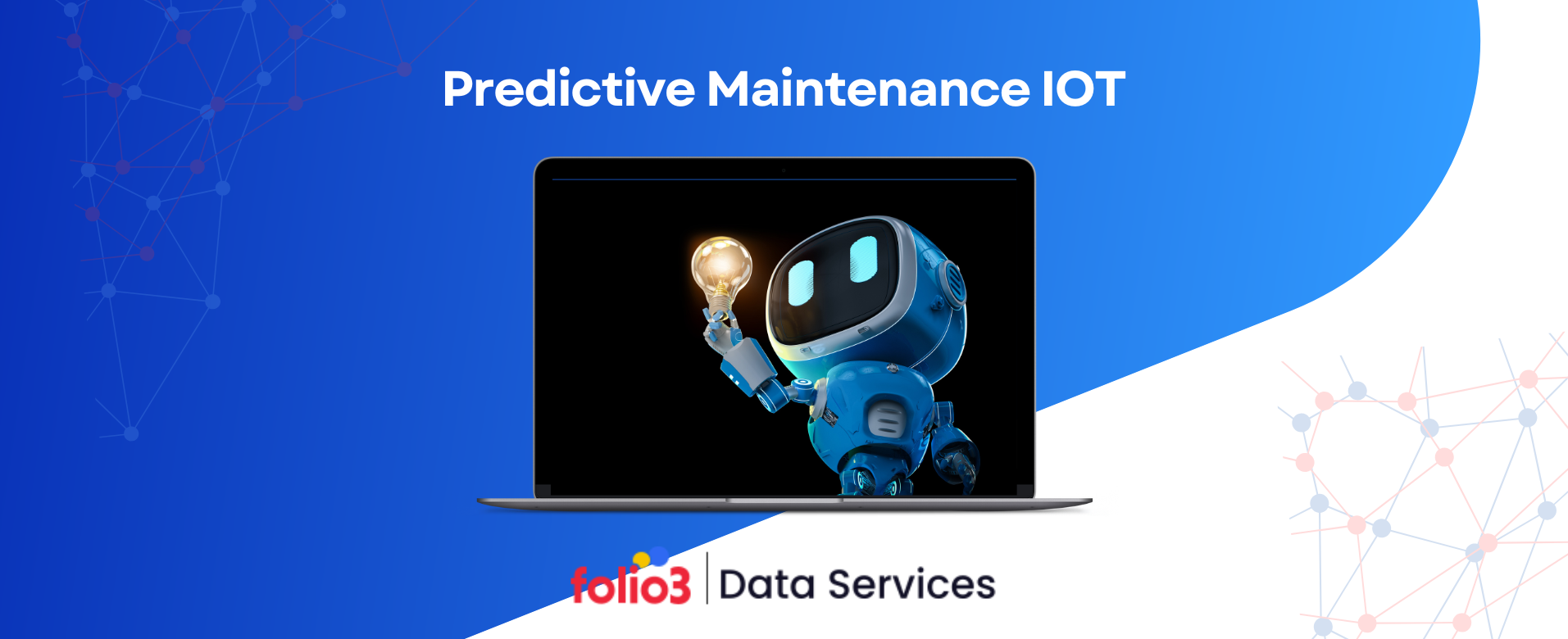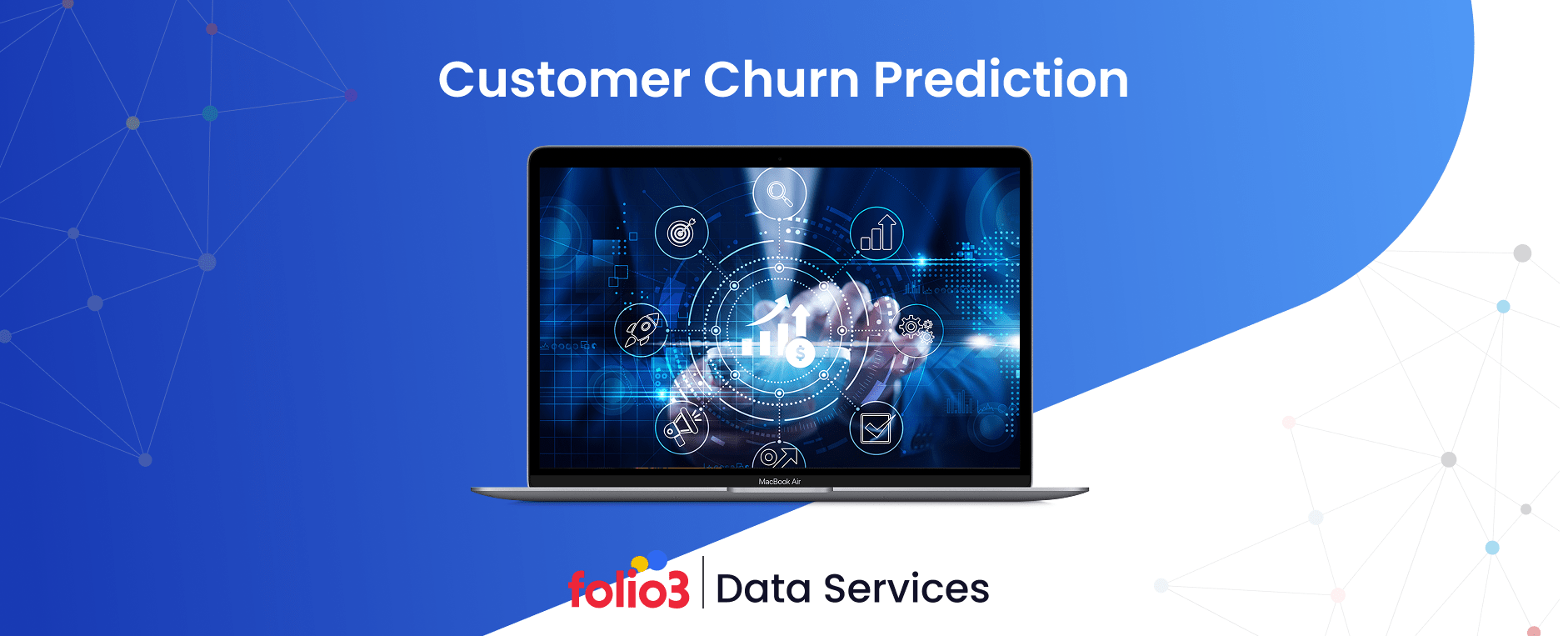We are a part of modern industries, and unexpected equipment failures can disrupt operations, increase costs, and impact profitability. Enter predictive maintenance IoT, a game-changing approach that uses the power of the Internet of Things (IoT) to revolutionize traditional maintenance strategies. By leveraging connected sensors and real-time data, businesses can predict and prevent potential issues before they occur, ensuring smooth and efficient operations.
Integrating industrial IoT predictive maintenance is more than just a technological advancement. It’s necessary for companies aiming to stay competitive in today’s digital-first economy. From monitoring temperature variations in machinery to detecting anomalies in equipment vibration, predictive maintenance using IoT enables proactive decision-making that saves time and money.
This blog will explore how IoT-based predictive maintenance is transforming industries worldwide. We’ll delve into IoT predictive maintenance applications, share compelling examples, and highlight why this innovative approach reshapes industrial operations.
What is Predictive Maintenance?
Predictive maintenance is a proactive maintenance strategy using advanced data analytics, machine learning, and IoT technologies to monitor real-time equipment conditions. Unlike traditional maintenance approaches—such as reactive maintenance, where repairs occur after a failure, or preventive maintenance, which relies on scheduled checkups—predictive maintenance focuses on predicting when equipment is likely to fail and addressing the issue before it happens.
The core idea is simple: by analyzing data collected from sensors embedded in machines, businesses can detect early warning signs of wear and tear, malfunctions, or other potential problems. These insights allow teams to take targeted action, reducing unplanned downtime and avoiding costly repairs.
When combined with IoT, predictive maintenance using IoT becomes even more powerful. IoT-enabled devices gather real-time data on various parameters, such as temperature, pressure, vibration, and performance metrics. This data is then transmitted to cloud-based analytics platforms for processing, enabling businesses to forecast potential failures with remarkable accuracy.
For example, in an industrial setting, sensors attached to machinery might detect abnormal vibrations that signal an impending issue. Maintenance teams can intervene early instead of waiting for a breakdown, ensuring uninterrupted operations. This ability to predict and prevent failures makes IoT-based predictive maintenance a cornerstone of modern industrial strategies.
With enhanced equipment lifespan, reduced operational costs, and improved safety, predictive maintenance is no longer a luxury but a necessity for industries striving to remain competitive in an increasingly connected world.
Applications of Predictive Maintenance Across Industries
The versatility of predictive maintenance IoT makes it an invaluable tool across various industries. Organizations can minimize operational disruptions and enhance efficiency by leveraging industrial IoT predictive maintenance.
Here’s a closer look at how predictive maintenance is being used in various sectors:
1. Manufacturing: Monitoring Machinery and Production Lines
In manufacturing, IoT-based predictive maintenance is revolutionizing how factories operate. Sensors embedded in machinery monitor parameters like temperature, vibration, and load. Leveraging insights from data analytics consulting, this real-time data helps identify wear and tear before it escalates into costly breakdowns.
For example, a production line might detect abnormal motor vibrations, allowing technicians to replace faulty parts without disrupting the workflow. These predictive maintenance examples demonstrate the potential to reduce downtime and optimize productivity in industrial environments.
2. Energy and Utilities: Predicting Failures in Power Grids and Equipment
In the energy sector, the Internet of things predictive maintenance enables utilities to monitor the health of transformers, turbines, and other critical equipment. IoT sensors track performance metrics like voltage and pressure, while predictive algorithms identify potential failures.
For instance, power grid operators can anticipate equipment malfunctions and prevent outages, ensuring consistent customer energy delivery. This proactive approach minimizes repair costs and enhances grid reliability.
3. Transportation: Vehicle Health Monitoring
Transportation systems heavily rely on predictive maintenance using IoT to ensure vehicle safety and efficiency. Fleet operators use IoT sensors to monitor engine performance, tire pressure, and brake systems.
Real-time data analysis helps predict maintenance needs, reducing the risk of breakdowns and costly delays. Logistics companies use this technology to keep their delivery trucks running smoothly, improving service reliability while cutting maintenance expenses.
4. Healthcare: Maintaining Medical Equipment Efficiency
Medical equipment reliability is critical for patient care. By employing IoT-based predictive maintenance and leveraging healthcare data analytics services, hospitals can monitor the condition of devices like MRI machines and ventilators. IoT sensors track usage patterns and performance metrics, flagging potential issues before they affect operations.
For example, an MRI machine might alert technicians to declining efficiency, leveraging predictive analytics in healthcare to prompt timely maintenance that prevents unexpected downtime and ensures continuous patient support.
Benefits of Predictive Maintenance Using IoT
The integration of IoT into predictive maintenance has revolutionized how businesses manage equipment and operations. By adopting predictive maintenance IoT, companies can unlock several transformative benefits that drive efficiency, reduce costs, and improve productivity.
The benefits of predictive maintenance IoT go beyond cost savings. They empower businesses to enhance asset performance, reduce downtime, and adopt a forward-thinking approach to maintenance. By leveraging industrial IoT predictive maintenance, companies across industries can maintain a competitive edge while delivering consistent and efficient operations. Here’s how:
1. Reduced Downtime and Operational Costs
Unplanned downtime can severely disrupt operations and inflate costs due to emergency repairs and lost productivity. With IoT-based predictive maintenance, businesses can monitor equipment health in real-time and detect potential issues early.
For example, industrial IoT predictive maintenance systems in manufacturing track machine vibrations and temperatures, identifying anomalies before they lead to costly breakdowns. This proactive approach minimizes downtime, optimizes resource utilization, and significantly reduces maintenance expenses.
2. Enhanced Asset Lifespan and Performance
One key advantage of predictive maintenance using IoT is its ability to extend the lifespan of critical assets. Continuous monitoring and timely interventions ensure that machines and equipment operate within optimal conditions, reducing wear and tear.
For instance, predictive maintenance examples in the energy sector include monitoring turbine efficiency to prevent overloading and maintain consistent performance. By prolonging asset longevity, businesses save on replacement costs and maintain operational reliability.
3. Proactive Approach to Failure Prevention
Traditional maintenance strategies often rely on scheduled Internet of Things inspections or react to failures after they occur. In contrast, Internet of Things predictive maintenance takes a proactive approach, predicting failures before they happen. IoT sensors collect and analyze data, providing actionable insights to maintenance teams.
For example, a transportation company can use IoT to track engine conditions and schedule repairs at optimal times, avoiding unexpected breakdowns and ensuring seamless operations.
Key IoT Technologies for Predictive Maintenance
The success of predictive maintenance IoT hinges on a suite of cutting-edge technologies that enable real-time monitoring, data processing, and actionable insights. These technologies form the backbone of industrial IoT predictive maintenance, making it possible to anticipate equipment failures precisely. Let’s explore the key IoT technologies driving this revolution:
1. IoT Sensors: Vibration, Temperature, Humidity, and More
IoT sensors are at the heart of predictive maintenance using IoT, capturing real-time data on critical equipment parameters. Sensors monitor variables such as vibration, temperature, pressure, and humidity, often early indicators of potential issues.
For instance, excessive vibration detected by IoT sensors in a production line might signal a misalignment or bearing wear. These predictive maintenance examples highlight how sensors provide early warnings that prevent unexpected failures and costly downtime.
2. Cloud-Based Data Storage and Processing
The vast amount of data generated by IoT sensors is stored and processed in the cloud, a critical component of IoT-based predictive maintenance. Cloud platforms offer scalability and robust processing power, enabling businesses to analyze equipment data in real-time.
This centralized approach allows maintenance teams to access predictive insights from anywhere, ensuring quick decision-making and seamless operations.
3. Edge Computing and Real-Time Analytics
While cloud computing plays a significant role, the Internet of Things predictive maintenance also leverages edge computing for real-time analytics. By utilizing predictive analytics techniques, edge devices process data locally and near the source, reducing latency and enabling immediate responses.
For example, in industrial settings, edge computing can analyze sensor data directly on factory floors, triggering alerts for maintenance teams before a problem escalates. This combination of edge and cloud computing ensures a balance of speed and scalability in predictive maintenance systems.
4. IoT Platforms for Predictive Maintenance
IoT platforms are the central hub for integrating sensors, data analytics, and maintenance workflows. These platforms provide tools for data visualization, machine learning, and predictive modeling, simplifying industrial IoT predictive maintenance solutions implementation.
Businesses can use these platforms to create tailored dashboards, track equipment health, and automate maintenance schedules. For instance, a wind energy company might use an IoT platform to monitor turbine performance and optimize maintenance intervals, minimizing downtime while maximizing efficiency.
Challenges in Implementing Predictive Maintenance with IoT
While predictive maintenance IoT offers significant advantages, implementing it presents several challenges businesses must navigate to realize their full potential. From cost to integration hurdles, these challenges require careful planning and strategic execution.
Despite the challenges below, adopting predictive maintenance using IoT continues to grow, driven by its immense potential to enhance operational efficiency and reduce costs. As businesses overcome these hurdles, the transformative benefits of the Internet of things predictive maintenance will become increasingly accessible, paving the way for smarter, more proactive industries.
Addressing the following challenges requires a strategic approach, including investment in advanced technologies and workforce development:
1. High Initial Costs of Implementation
The setup of industrial IoT predictive maintenance involves considerable upfront investment. Businesses must procure IoT sensors, develop data collection and processing infrastructure, and integrate predictive maintenance systems into their workflows.
While the long-term benefits of predictive maintenance using IoT far outweigh these initial costs, smaller organizations may face budget constraints, making it challenging to adopt this technology on a large scale.
2. Data Security and Privacy Concerns
With IoT-based predictive maintenance, sensitive operational data is continuously transmitted, often to cloud-based platforms. This raises concerns about data security and privacy, especially in industries where proprietary information is critical.
Cybersecurity threats, such as unauthorized access or data breaches, can compromise the reliability of Internet of Things predictive maintenance systems. Businesses must implement robust encryption, authentication, and monitoring mechanisms to safeguard their data.
3. Integration with Legacy Systems
Many industries rely on legacy equipment and systems not designed for IoT integration. Connecting such equipment to modern IoT-based predictive maintenance platforms can be complex and resource-intensive.
For instance, industrial equipment without digital interfaces may require retrofitting with IoT sensors, which poses additional challenges in terms of compatibility and cost.
4. Skill Gap and Training Requirements
Implementing and managing predictive maintenance IoT solutions requires specialized skills like data analytics, IoT technology management, and machine learning expertise. However, many organizations face a skill gap, with existing staff unprepared to handle the technical demands of these systems.
Training programs and hiring qualified personnel are essential to bridge this gap. For example, maintenance teams must learn to interpret predictive insights and act on them effectively, ensuring the smooth operation of IoT systems.
Steps to Implement Predictive Maintenance Using IoT
Implementing IoT predictive maintenance requires a systematic approach to ensure successful deployment and integration into existing processes. By following these steps, organizations can maximize the benefits of IoT-based predictive maintenance and effectively address common challenges.
1. Identify Critical Assets for Maintenance
The first step is identifying which equipment or systems are critical to operations and most likely to fail. For example, a manufacturing plant may prioritize high-value machinery like CNC machines or production line equipment.
Analyzing downtime costs and maintenance histories can help businesses pinpoint assets where industrial IoT predictive maintenance can have the most significant impact. According to McKinsey, predictive maintenance reduces machine downtime by up to 50% and increases asset lifespan by 20–40%, underscoring the importance of selecting the right assets.
2. Deploy IoT Sensors for Data Collection
Once critical assets are identified, IoT sensors are installed to monitor parameters like vibration, temperature, pressure, and humidity. These sensors generate real-time data, offering continuous insights into equipment health. For instance, a transportation company might deploy IoT sensors on vehicle engines to monitor wear and tear.
These devices provide actionable data that feeds into predictive maintenance using IoT systems, enabling early detection of issues. Automotive companies like Tesla use IoT sensors to monitor battery performance and identify potential problems before failures occur, reducing the risk of costly breakdowns.
3. Establish Data Analysis and Monitoring Systems
The data collected by IoT sensors must be analyzed in real time to predict potential failures accurately. This involves processing large volumes of data using cloud platforms, edge computing, or both. Predictive models powered by machine learning analyze historical and real-time data, identifying patterns and anomalies.
For example, a power grid operator can use the Internet of things predictive maintenance to detect fluctuations in transformer temperature and predict when maintenance is needed. A Deloitte study found that predictive maintenance powered by IoT can reduce maintenance costs by 10–40% compared to traditional methods.
4. Integrate Predictive Maintenance into Existing Workflows
The final step is to embed predictive maintenance into the organization’s standard operational processes. Maintenance schedules, alert systems, and workflows should be aligned to take advantage of predictive insights. For instance, integrating IoT-based predictive maintenance into enterprise resource planning (ERP) systems ensures alerts trigger automated maintenance tickets, streamlining operations.
Training maintenance teams to interpret IoT data and act proactively is also crucial. In manufacturing, Siemens integrates IoT-based systems into its automation workflows, allowing real-time responses to potential equipment failures.
Conclusion
Predictive maintenance powered by IoT transforms industries by combining real-time data, advanced analytics, and proactive decision-making. This innovative approach not only reduces downtime and operational costs but also enhances equipment lifespan and overall efficiency.
By partnering with Folio3 Data, businesses can incorporate IoT technologies like sensors, cloud computing, and edge analytics to detect and resolve potential issues before they escalate into costly failures. While challenges like high initial costs and integration complexities exist, the long-term benefits outweigh these hurdles.
As industries adopt IoT-based predictive maintenance, they pave the way for smarter, more efficient, and more sustainable operations in the digital era.





